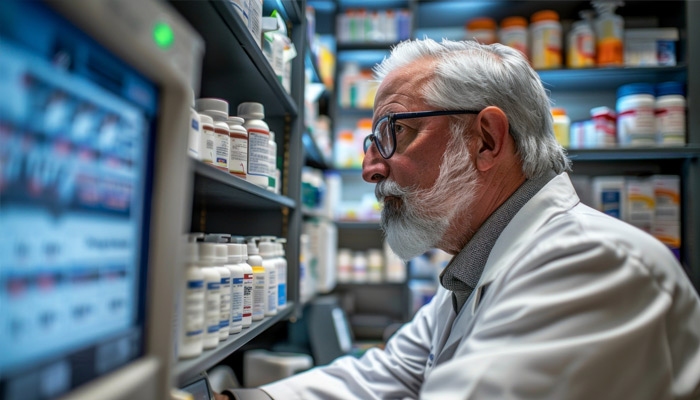
The Growing Role and Challenges of Compounding Pharmacies
As their role in healthcare expands, it’s crucial to understand their benefits, risks and the regulatory landscape shaping this evolving sector.
Compounding pharmacies provide personalized medications that meet unique patient needs when standard drugs fall short.
Most medications are approved by regulatory agencies like the FDA for specific indications, dosages and delivery forms. However, when a patient’s needs fall outside these parameters—whether due to allergies, dosage requirements or difficulty swallowing—clinicians often turn to compounding pharmacies. Compounding pharmacies grind, mix and combine approved drugs to create customized medications tailored to individual needs, offering significant flexibility in treatment. But their growing presence has raised concerns among regulators and insurers who seek to manage safety standards and control costs.
The personalized medications in which compounding pharmacies specialize are not generally commercially available. This can involve changing the dosage form, such as converting a tablet into a liquid for a patient who has difficulty swallowing, adjusting the strength of a medication or adding flavoring to make it more palatable for children. Approximately 7,500 of the 56,000 community-based pharmacies in the U.S. focus primarily on compounding [1]. These pharmacies operate under standards set by the U.S. Pharmacopeial Convention, covering sterile and nonsterile compounding.
Growth in Importance and Economic Impact
Before modern standardized medical care, most pharmacies were of the compounding variety. In the 1930s, about 75% of prescriptions required some form of compounding, but this fell sharply to less than 5% by 1960 due to the rise of mass-manufactured pharmaceuticals. Starting in the 1980s, the demand for compounding resurged due to the advent of complex treatments such as chemotherapy and home infusion therapies. In the early 1990s, there were only a few thousand compounding pharmacies in the U.S., but this number grew to over 7,500 by 2020. The market has expanded from filling approximately 100 million prescriptions in 2000 to over 500 million annually today. The rise in personalized medicine, especially in areas like hormone replacement therapy and oncology, has further fueled this growth, making compounding pharmacies a multi-billion-dollar industry with continued upward trends projected into the 2030s [2].
A major criticism compounding pharmacies face is the risk of safety and quality issues due to less stringent oversight compared to traditional drug manufacturers. High-profile incidents, such as the 2012 fungal meningitis outbreak that killed 64 patients, have raised alarms about the standards of compounding practices. Common issues include errors in formulation, dosing miscalculations, and contamination, which can lead to severe health consequences, especially for vulnerable populations like children). The lack of consistent regulation and inspection practices across states exacerbates these concerns, with many compounding pharmacies operating under varying degrees of oversight and compliance.
“Mr. Chin was a pharmacist, but again and again, he acted with complete disregard for the health and safety of patients,” said U.S. Attorney Andrew E. Lelling. “Mr. Chin will now be held responsible for producing contaminated drugs that killed dozens and grievously harmed over 750 people across the country” [3].
A Balanced Path Forward: Integrating Stakeholder Interests
In response to safety concerns, regulatory bodies have increased scrutiny of compounding pharmacies. The Drug Quality and Security Act of 2013 empowered the FDA to oversee compounding activities more closely, especially for outsourcing facilities that produce high volumes of compounded drugs. However, despite this increased authority, the FDA does not routinely inspect compounding pharmacies, and there are still gaps in quality assurance and adverse event reporting. As a result, state pharmacy boards remain the primary regulators, creating a patchwork of oversight that can complicate efforts to maintain consistent safety standards across the industry.
Advocacy groups and industry experts suggest enhancing transparency, standardizing quality practices, and fostering collaboration between state and federal regulators. This approach would help mitigate the risks associated with compounding while preserving the flexibility that makes these pharmacies invaluable to patient care [4]. “There needs to be a balance between maintaining access to much-needed compounded drugs while minimizing the risks associated with their use,” highlights the importance of open communication and robust regulatory frameworks to ensure safe and effective compounding practices.
Pros and Cons of Compounding Pharmacies
Pros
- Customized medication for unique patient needs
- Provides alternatives during drug shortages
- Tailored dosage forms (liquids, creams, gels)
- Flexibility in drug forms and flavors
- Supports personalized medicine
- Important in cases of allergies or intolerance
- Can accommodate specific patient preferences
Cons
- Formulation and dosing errors
- Safety concerns (contamination, inconsistent quality)
- High cost of compounded ingredients
- Inconsistent regulatory oversight
- Expensive and time-consuming production
- Intellectual property infringement [5]
- Limited FDA inspection of pharmacies
Compounding pharmacies play a vital role in providing customized healthcare solutions. While their benefits are clear, addressing the criticisms and improving regulatory oversight will be key to ensuring that they can safely continue to meet the needs of patients who require specialized medications. Balancing the interests of healthcare providers, regulators, and patients will help shape a sustainable path forward for this growing sector of the pharmaceutical industry.
Health and safety are not the only reason compounding pharmacies draw criticism, there are legal issues as well. Further reading to consider [links in titles]:
Drug Companies: Compounding Pharmacy, Two of Its Executives, and Private Equity Firm Agree to Pay $21.36 Million to Resolve False Claims Act Allegations
The legal battles between pharmaceutical manufacturers and compounding pharmacies are intensifying, as manufacturers claim that compounded versions of patented drugs infringe on their rights and pose safety risks.
Department of Justice: Thirteen Defendants Plead Guilty in $126 Million Compounding Fraud Scheme
Thirteen defendants, including pharmacy owners and physicians, pleaded guilty to a $126 million fraud scheme involving kickbacks and false claims for compounded drugs to federal programs like TRICARE. They manipulated prescriptions to maximize reimbursement without regard for medical necessity, compromising patient safety.
Insurance Companies: Compounding the Fraud: Questionable Billing by Pharmacies
Compounding pharmacies are under fire for questionable billing practices that exploit insurance programs, highlighting the need for regulatory reforms to prevent fraud and protect patients.
Cited:
[1] American Pharmacists Association, “Frequently Asked Questions About Pharmaceutical Compounding:” https://www.pharmacist.com/Practice/Patient-Care-Services/Compounding/Compounding-FAQs
[2] Bourne Partners, “Historical Context of Compounding Pharmacies and Market Growth in the 1990s and 2000s—Market Insight:” https://bourne-partners.com/wp-content/uploads/2018/11/Bourne-Partners-Research_Compounding-Pharmacy-Report_Dec-18-1.pdf
[3] MassLive, “Former NECC pharmacist sentenced to 8 years in meningitis outbreak:” https://www.masslive.com/politics/2018/01/former_necc_pharmacist_sentenc.html#:~:text=%22Mr.%20Chin%20was,health%20care%20system.%22
[4] U.S. Pharmacists, “Pros and Cons of Pharmacy Compounding:” https://www.uspharmacist.com/article/pros-and-cons-of-pharmacy-compounding-1
[5] Pharmacy Times, “Legal Battles Intensify: Pharmaceutical Manufacturers’ Lawsuits Targeting Compounding Pharmacies:” https://www.pharmacytimes.com/view/legal-battles-intensify-pharmaceutical-manufacturers-lawsuits-targeting-compounding-pharmacies





